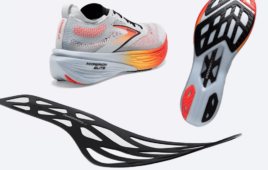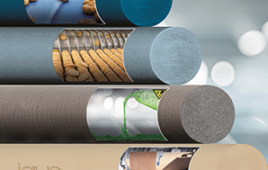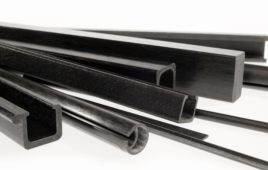by Greg Roembke/Roembke Mfg. & Design, Inc.
Acute gastrointestinal illness has been linked to public drinking water systems in the U.S., which has driven the development of new microbiological test methods. Currently, typical laboratory water vial testing samples can take up to two weeks of processing for final results of clean water free of harmful E.coli and Total Coliform bacteria contamination.
A turnkey, single-use, water test cartridge and automated monitoring system has been developed to reduce testing to within 2-18 hours, depending on the level of contamination. The cartridge incorporates overmolded rigid plastic and optical grade LSR (liquid silicone rubber). The test cartridge leverages a 2-shot mold and subsequent robotic transfer into an integrated assembly cell to complete six processes outside of the molding area, and then put in a box ready to ship.

Key design elements in the cartridge included a plastic vial with a living hinge and cap, coupled with an optically clear lSr plug/nub at the bottom of the vial for the testing the water via the optical system.
The cartridge system created and designed by Roembke Mfg. & Design, Inc. (Ossian, IN), ENDETEC (Kingston, ONT), and Engel Machinery North America (York, PA) initially focused on materials, which had to be clear to see the fluid inside the cartridge and pass gamma sterilization processing. Then engineers focused on eliminating inhibitors in the chosen plastic, to get an optimal seal with the LSR. Finally, the materials could not interfere with the microbiological growth that takes place during the test process.
The plastic selected was a modified polypropylene and the LSR was an optically clear 1003-grade silicone. The materials were finalized by tweaking the thermoplastic process to figure out estimated cycles, temperatures of the mold, sealing, and so on.
ENDETEC’s TECTA automated microbiological testing system for E.coli monitoring used a built-in incubation, optical system, integrated user interface with interpretive software, and a special test cartridge for the detection of E.coli and total coliforms. Key design elements in the cartridge include a plastic vial with a living hinge and cap, coupled with an optically clear LSR plug/nub at the bottom of the vial for testing the water through the optical system.

The wide platen machine leveraged a special ejector pattern for the tool design centered behind each application for the thermoplastic and lSr.
ENDETEC worked on the seal design between the plastic and LSR materials and determined that there could be no chemical bonding agent between them, giving rise to another reason for choosing the special optical grade LSR. To meet the required temperatures, focus was directed to thermoplastics. This was done to produce an effective seal that would not leak fluid between the materials. The set-up was for pre-production testing and designed with the capability to eventually expand to higher cavities (4+4) once the production process was proven out.
The next decision was whether to mold the materials separately and assemble them or to overmold them. Roembke and Engel worked together in developing the 2-shot molding cell and LSR tooling prototypes. Testing these prototypes consisted of seven injection molding presses ranging from 35 tons to 200 tons.
Engel addressed the first stage of automation in the prototyping by enlisting Pro Systems (Churubusco, Indiana), to integrate the turnkey automation into the machine. Due to operating height restrictions, a 6-axis robot was used for the final assembly, completing six processes outside of the molding area. This process also included placing a water-soluble pouch containing pre-measured amounts of growth media that support the enrichment of any target bacteria present in the sample for each water test cartridge.

The six-axis robotic system completed six processes outside of the molding area.
A series of pre-production testing, prototype tools were modified for the plastic vial and LSR component to complete the 2-shot mold/press process. One press was used to mold the plastic vials, which then moved to the second press to apply the LSR tool. The primary machine used was Engel’s Victory 200H/80L/160 Combi. This 160-ton single cavity machine with wide platens equipped with two injection units was used to run the two separate materials. The primary (200H) was for thermoplastics and the secondary (80L) was for LSR.
Ultimately, the Roembke mold was a single drop cold deck with a standard LSR valve gate design featuring side injection versus back injection for the plastic. The final Engel machine was a standard 2-component machine that incorporated the smallest diameter screw possible (12 mm) on the injection unit. The wide platen machine leveraged a special ejector pattern for the tool design centered behind each application for the thermoplastic and LSR. Servo valves were used on both ejection units with valve controls used for optimal speeds and pressures.
Roembke Mfg. & Design, Inc.
www.roembke.com
Filed Under: Materials • advanced, TEST & MEASUREMENT





Tell Us What You Think!